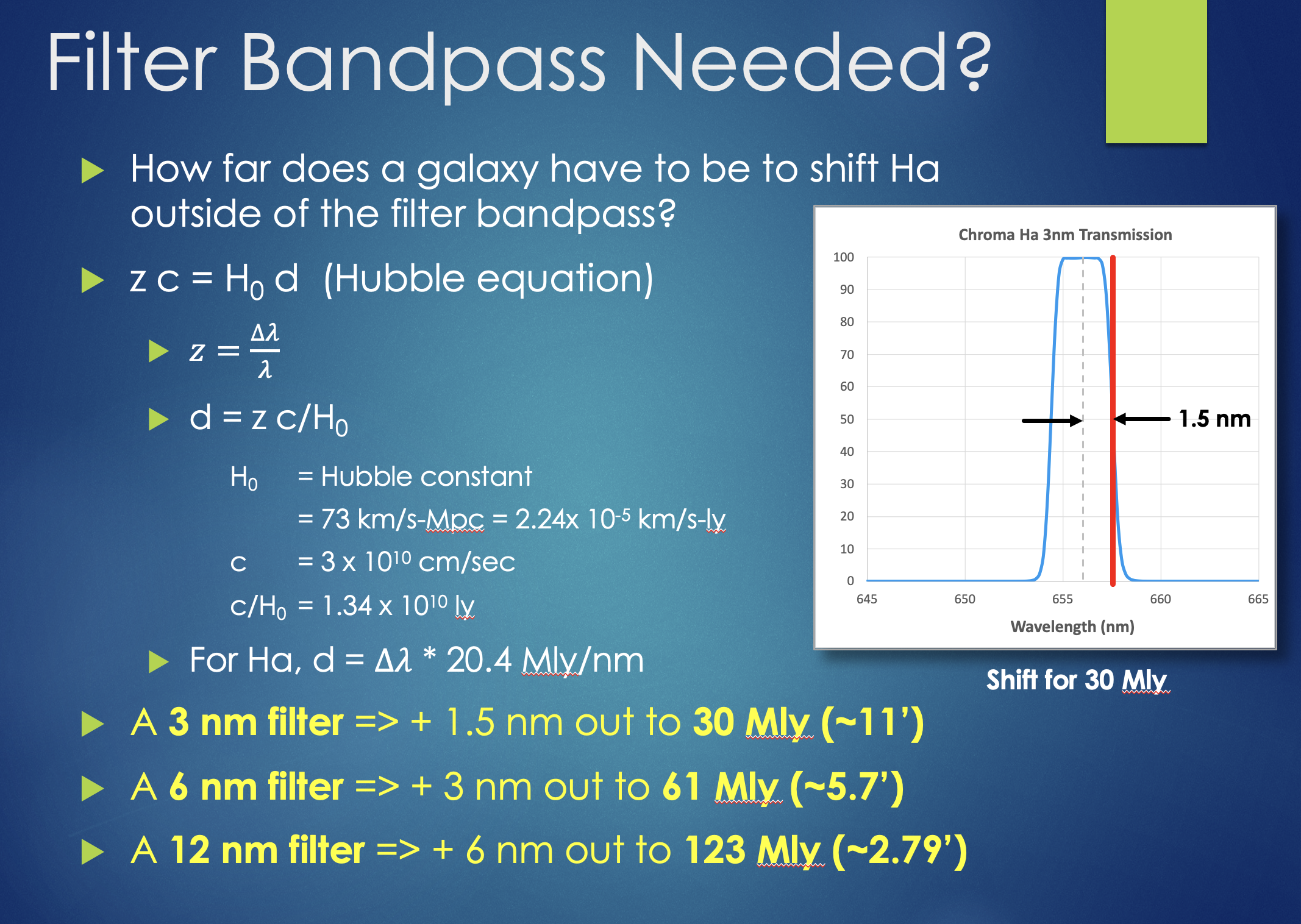A question that comes up every once in a while around here is what narrow band filter to use for adding Ha to Galaxy images? The concern is that as galaxies get further away, their light becomes more red-shifted so the question is how well will 3 nm, 6 nm, or 12 nm Ha filter bandwidths work for imaging distant galaxies.? Next Sunday, July 13 I'll be appearing on the Astro-Imaging Channel to present an updated version of my "Galaxy Studio" talk that I gave at NEIAC. It starts at 6:30 EDT but double check the time to be sure. It covers a lot of aspects of galaxy imaging ranging from acquisition to processing. Here is a slide from the talk that addresses the question of filter bandwidth requirements. Not all galaxies are receding at the exact rate predicted by Hubble so understand that this calculation is presented in the best tradition of astronomical estimation. The image size estimates are for galaxies with a size similar to the Milky Way (~100,000 ly). I use 3 nm filters in my systems and in most cases, they work just fine and they are great for imaging emission nebula when the moon is up and the sky is bright. I've used 5 nm Astrodon filters as well and they seemed to work quite well. In generally, I would recommend either 3 nm or 6 nm filters for galaxy imaging. You'll save money with 12 nm filters but you'll also loose a fair amount of contrast when the moon is out.
Hopefully this is helpful and I hope to see a lot of you next Sunday on the channel!
John

Hopefully this is helpful and I hope to see a lot of you next Sunday on the channel!
John
